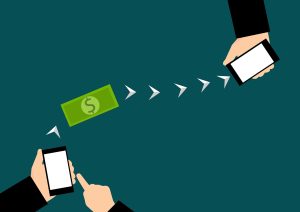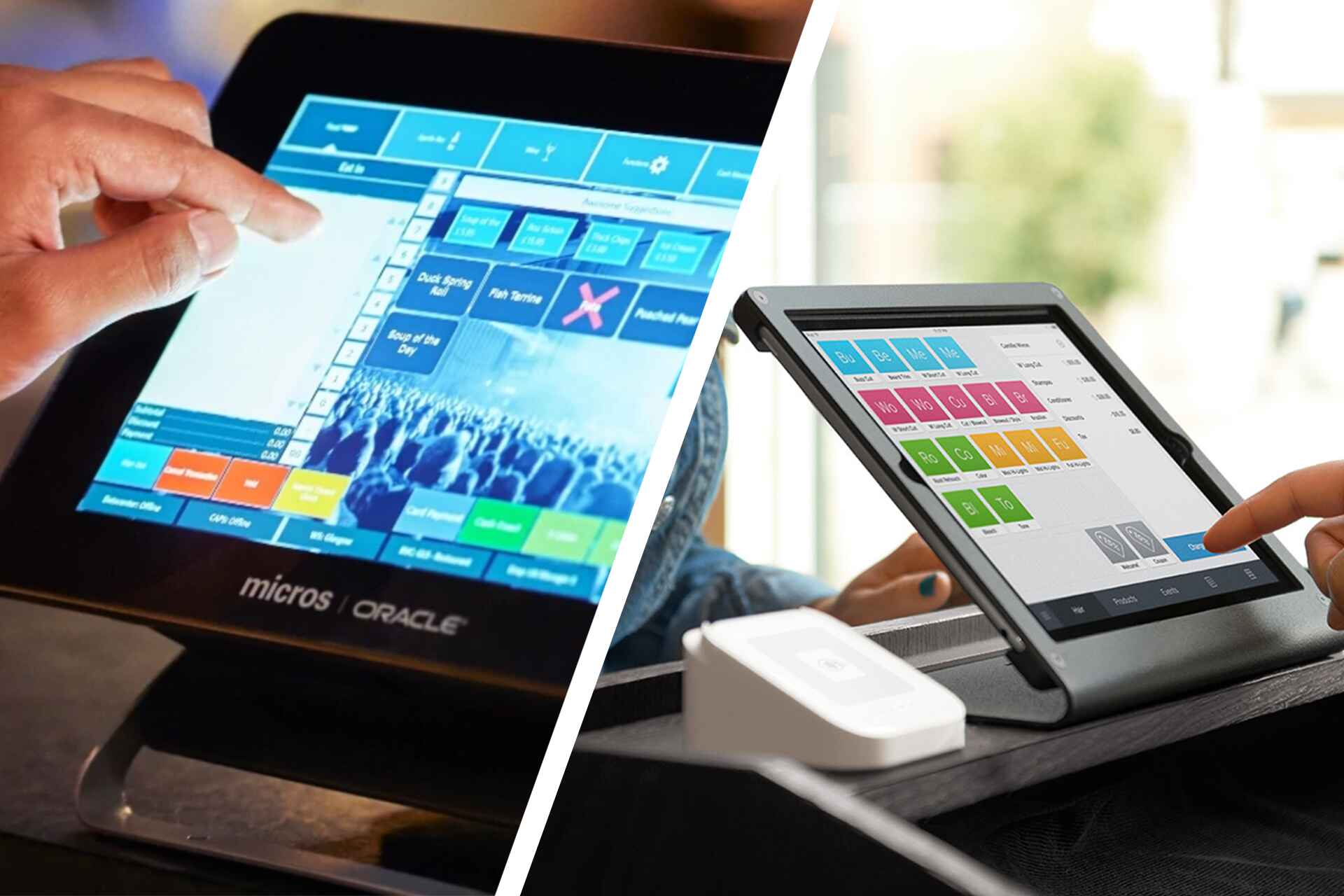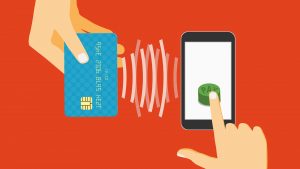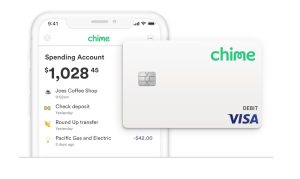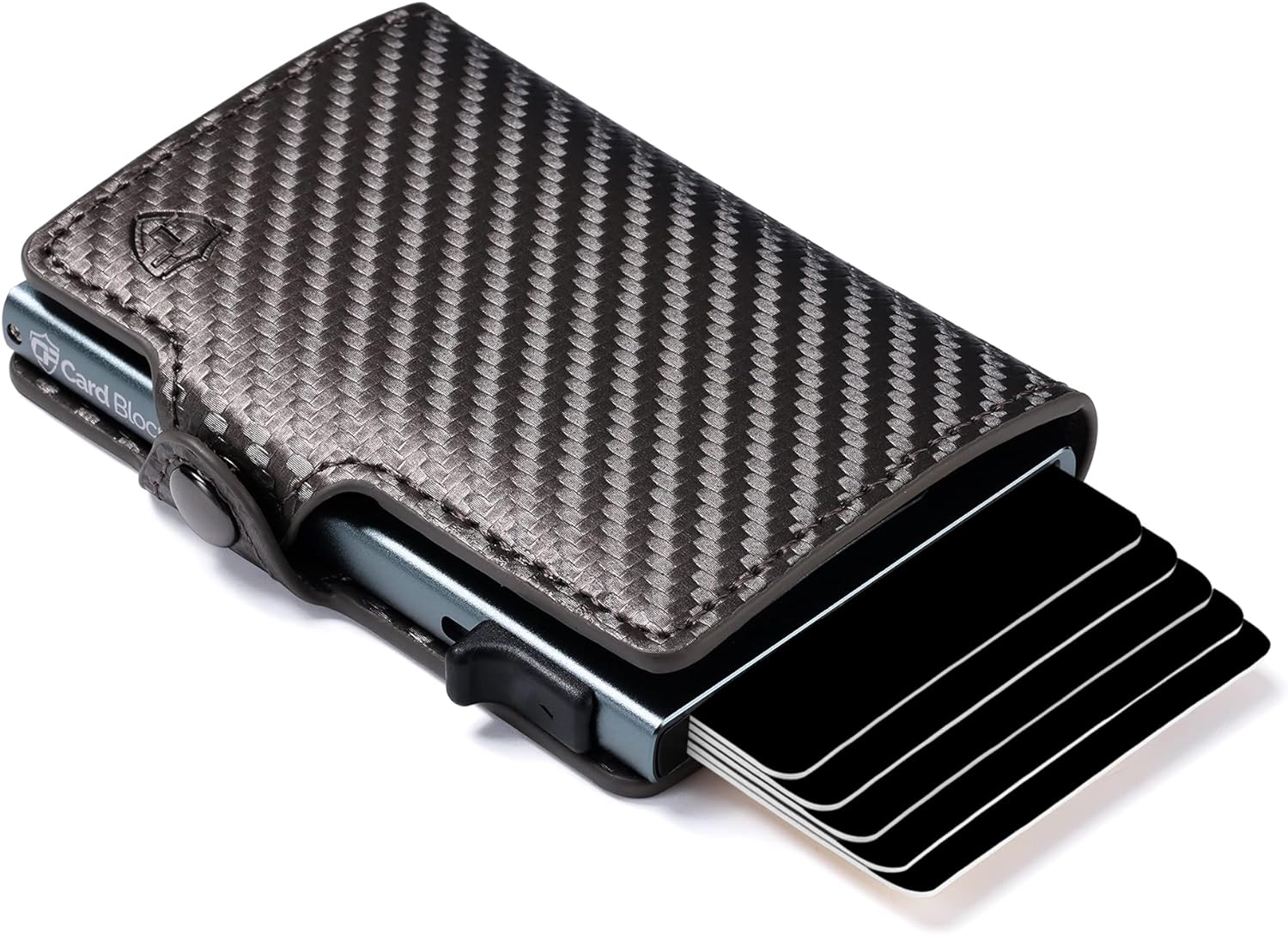Introduction
Welcome to our guide on the Cash App Card! In this article, we will explore what the Cash App Card is, its features and benefits, how to get and activate one, how to use it, as well as its fees and limitations. If you’re not familiar with the Cash App, it’s a popular mobile payment service that allows users to send and receive money from friends and family, as well as make purchases from businesses.
The Cash App Card is a physical, prepaid debit card that is linked to your Cash App account. This card allows you to spend the funds in your Cash App account at any merchant that accepts Visa, both online and in-person. It provides a convenient and easy way to access your Cash App balance and make purchases without relying solely on your mobile device.
With the Cash App Card, you can enjoy the flexibility and convenience of a traditional debit card while still taking advantage of the features offered by the Cash App. It’s a great option for those who prefer to have a physical payment card on hand, whether for everyday expenses or special purchases.
In the following sections, we will delve deeper into the various aspects of the Cash App Card, including its features, how to obtain and activate one, and how to make the most of it for your financial needs. So, let’s jump in and explore everything you need to know about the Cash App Card!
Cash App
Cash App is a popular mobile payment service developed by Square Inc. It allows individuals to send and receive money securely through their smartphones. With Cash App, you can easily split bills, pay friends, or receive payments for products and services. It has gained widespread popularity due to its user-friendly interface and seamless money transfer capabilities.
One of the standout features of Cash App is its ability to provide users with a virtual Visa debit card, known as the Cash App Card. This card is linked directly to your Cash App account, allowing you to access your funds seamlessly and make purchases wherever Visa cards are accepted.
Aside from its payment functionalities, Cash App also offers a range of additional features to enhance your financial experience. These include the ability to invest in stocks and buy Bitcoin, as well as the Cash App Direct Deposit feature, which allows users to receive their paychecks directly into their Cash App accounts.
Overall, Cash App is a versatile and comprehensive platform that combines the convenience of mobile payments with additional financial features. Whether you need to send money to a friend, make purchases online or in-person, or manage your investments, Cash App provides a user-friendly and secure platform to meet these needs.
In the following sections, we will dive deeper into the specific features and benefits of the Cash App Card, so you can understand how it can enhance your payment experience and financial management.
What is a Cash App Card?
The Cash App Card is a physical, prepaid debit card that is linked to your Cash App account. Think of it as a bridge between your digital funds and the physical world. It allows you to use your Cash App balance to make purchases both online and in-person.
With the Cash App Card, you no longer have to rely solely on your mobile device to access your Cash App funds. Instead, you can use the card like any other debit card to make payments at merchants that accept Visa. This provides you with greater flexibility and convenience, especially in situations where mobile payments may not be accepted or viable.
The Cash App Card comes with a unique card number, expiration date, and CVV security code, just like any other payment card. It is available in a sleek, black design, featuring the Visa logo and your name engraved. The card can be used for everyday expenses, such as groceries, gas, or dining out, as well as for larger purchases or online shopping.
One important thing to note is that the Cash App Card is not connected to your bank account. It draws funds directly from your Cash App balance, so you have better control over your spending. You can easily track your transactions and monitor your expenses through the Cash App mobile application.
Furthermore, the Cash App Card offers a feature called Boosts. With Boosts, you can unlock exclusive discounts and cashback offers at select merchants. These can range from popular retailers, restaurants, or even streaming services. Boosts provide you with additional savings and benefits when using your Cash App Card for specific purchases.
Overall, the Cash App Card offers a convenient and secure way to access your Cash App funds, allowing you to make purchases both online and offline. Whether you’re looking to simplify your payment experience or take advantage of Boosts and discounts, the Cash App Card is a valuable addition to your financial toolkit.
Features of the Cash App Card
The Cash App Card comes with a range of features that make it a convenient and versatile payment option. Let’s take a closer look at some of its key features:
- Real-time Balance: The Cash App Card is directly linked to your Cash App account, allowing you to access and spend your funds in real-time. You can easily check your card balance through the Cash App mobile application.
- Security: Cash App employs industry-leading encryption and fraud protection measures to ensure the security of your transactions and personal information. In addition, you can enable various security features like fingerprint or Face ID verification for added protection.
- Compatibility: The Cash App Card works wherever Visa cards are accepted, both online and in-person. This means you can use it at millions of merchants worldwide, making it a versatile payment option for all your needs.
- Boosts: The Cash App Card offers exclusive discounts and cashback offers through a feature called Boosts. These can include discounts at popular retailers, restaurants, or even ride-sharing services, allowing you to save money on your everyday purchases.
- Direct Deposit: With the Cash App Card, you can set up direct deposit and have your paycheck automatically deposited into your Cash App account. This provides you with the convenience of accessing your funds without the need for paper checks or waiting in line at the bank.
- Peer-to-Peer Payments: Apart from using the Cash App Card to make purchases, you can also use Cash App to send or receive money to/from friends and family. It offers a simple and seamless way to split bills or pay back a friend.
These are just a few of the standout features that make the Cash App Card a popular choice for users. With its real-time balance access, security measures, compatibility, Boosts, direct deposit option, and peer-to-peer payment capabilities, the Cash App Card provides a comprehensive payment solution for various financial needs.
How to Get a Cash App Card
If you’re interested in getting a Cash App Card, follow these simple steps to request one:
- Download the Cash App: Start by downloading the Cash App on your smartphone. It is available for both iOS and Android devices and can be found in the respective app stores.
- Create an Account: Open the Cash App and create an account using your email address or phone number. Follow the prompts to enter the required information and set up your account.
- Link Your Bank Account: To use the Cash App Card, you’ll need to link a valid bank account to your Cash App account. This allows you to add funds to your Cash App balance which can be used with your card.
- Request a Cash App Card: Once your Cash App account is set up and linked to your bank account, you can request a Cash App Card. Navigate to the Cash Card tab in the app and click on “Get Cash Card.”
- Customize Your Card: During the request process, you have the option to customize your Cash App Card. You can choose a unique design or even add your signature to make it more personal.
- Confirm Your Mailing Address: Next, verify and confirm your mailing address. This is where your physical Cash App Card will be sent. Make sure to provide an accurate and up-to-date address.
- Wait for Delivery: After completing the above steps, your request for a Cash App Card will be processed. The card will be delivered to the address you provided within a few business days.
It’s important to note that there may be restrictions or eligibility requirements for obtaining a Cash App Card, depending on your location. Make sure to check the availability and requirements in your country or region before proceeding.
Once you receive your Cash App Card, you’ll need to activate it before you can use it for transactions. Let’s explore the activation process in the next section.
How to Activate a Cash App Card
Activating your Cash App Card is a straightforward process. Once you receive your card, follow these steps to activate it:
- Open the Cash App: Launch the Cash App on your smartphone and log in to your account using your email address or phone number.
- Access the Cash Card Tab: Tap on the Cash Card icon at the bottom of the screen to navigate to your Cash App Card settings.
- Activate Your Card: In the Cash Card settings, you will see an option to “Activate Cash Card.” Click on it to begin the activation process.
- Enter the Card Details: You will be prompted to scan the QR code on the back of your Cash App Card using your device’s camera. Alternatively, you can manually enter the card details, including the card number, expiration date, and CVV code.
- Verify Your Identity: To ensure the security of your account, Cash App may ask you to verify your identity during the activation process. Follow the on-screen prompts to complete the verification, which may include providing personal information or verifying your identification documents.
- Wait for Confirmation: Once you have entered the required information and completed the verification process, wait for the confirmation that your Cash App Card has been activated. This will be displayed within the app.
After successfully activating your Cash App Card, you can start using it for purchases both online and in-person. The card will be linked to your Cash App balance, allowing you to access your funds seamlessly and make transactions wherever Visa cards are accepted.
It’s important to note that if you ever need to change or update the information on your Cash App Card, such as your name or mailing address, you can do so within the Cash App settings. Simply navigate to the Cash Card tab and select the “Replace My Card” option.
Now that you have learned how to obtain and activate your Cash App Card, let’s explore how to make the most of its features in the next section.
How to Use the Cash App Card
Using the Cash App Card is simple and intuitive. Once your card is activated, follow these steps to make the most of its features:
- Add Funds to Your Cash App Account: Before using your Cash App Card, make sure you have funds available in your Cash App account. You can add money to your account through various methods, such as linking your bank account, receiving direct deposits, or transferring money from other Cash App users.
- Make Purchases In-Person: When making an in-person purchase, simply hand over your Cash App Card to the cashier, just like you would with any other debit card. Swipe or insert the card into the payment terminal and enter your PIN if prompted.
- Make Online Purchases: When making online purchases, enter your Cash App Card details, including the card number, expiration date, and CVV code, just like you would with any other payment card. Make sure the merchant accepts Visa cards.
- Check Your Balance: To keep track of your spending and monitor your available funds, regularly check your Cash App balance through the Cash App mobile application. This allows you to manage your finances and make informed spending decisions.
- Take Advantage of Boosts: The Cash App Card offers exclusive discounts and cashback offers through the Boosts feature. Before making a purchase, check the available Boosts in the Cash App and activate them to save money or earn rewards at select merchants.
- Safeguard Your Card: Protect your Cash App Card like you would with any other payment card. Keep it in a safe and secure place, and notify Cash App immediately if it is lost or stolen. You can also enable additional security measures, such as PIN requirements or biometric authentication, to enhance the safety of your card.
- Manage Your Transactions: Use the Cash App mobile application to review your transaction history, categorize your expenses, or export your statements for financial reporting. This allows you to stay organized and keep tabs on your spending habits.
By following these steps, you can easily use your Cash App Card for both in-person and online purchases, take advantage of Boosts for savings and rewards, and manage your transactions effortlessly.
It’s worth noting that while Cash App provides a seamless and intuitive payment experience, it’s important to be aware of any potential fees or limitations associated with the Cash App Card. Let’s explore these aspects in the next section.
Benefits of the Cash App Card
The Cash App Card offers numerous advantages that make it a valuable addition to your financial arsenal. Let’s explore some of the benefits of using the Cash App Card:
- Convenience: The Cash App Card provides convenient access to your Cash App account balance, allowing you to make purchases both online and in-person wherever Visa cards are accepted.
- Real-time Balance: With the Cash App Card, you can spend your funds in real-time. You no longer have to wait for a bank transfer or worry about potential delays in accessing your money.
- Boosts: The Cash App Card offers exclusive discounts and cashback offers through the Boosts feature. This allows you to save money and earn rewards when making purchases at select merchants.
- Flexibility: The Cash App Card gives you the flexibility to use your Cash App balance for a wide range of expenses, including everyday purchases, bills, dining, entertainment, and more.
- Security: Cash App implements robust security measures to protect your transactions and personal information. You can enable additional security features, such as PIN requirements or biometric authentication, to add an extra layer of protection.
- No Bank Account Required: Unlike traditional debit cards, the Cash App Card is not connected to a bank account. It draws funds directly from your Cash App balance, providing you with greater control over your spending and eliminating the need for a separate banking relationship.
- Peer-to-Peer Payments: With the Cash App Card, you can still enjoy the peer-to-peer payment features provided by Cash App. This allows you to easily send or receive money from friends and family directly from your Cash App account.
These benefits make the Cash App Card an attractive option for those seeking convenience, flexibility, and security in their payment methods. Whether you’re making purchases, taking advantage of Boosts, or sending money to loved ones, the Cash App Card enhances your financial experience.
However, it’s important to be aware of any associated fees or limitations with the Cash App Card. Let’s explore these aspects in the next section.
Cash App Card Fees and Limitations
While the Cash App Card offers many advantages, it’s important to be aware of the potential fees and limitations associated with its usage. Understanding these will help you make informed decisions and manage your finances effectively. Here are some key fees and limitations to consider:
- Card Replacement Fee: If your Cash App Card is lost or stolen, there may be a fee to replace it. Make sure to keep your card safe and notify Cash App immediately if it goes missing.
- ATM Withdrawal Fees: Cash App allows you to withdraw cash from ATMs using your Cash App Card. However, ATM withdrawals may incur fees, both from Cash App and the ATM operator.
- Foreign Transaction Fees: When using your Cash App Card for purchases outside of your home country, foreign transaction fees may apply. These fees are commonly charged as a percentage of the transaction amount.
- Cash App Balance Limitations: Cash App imposes certain limits on your account, including the amount you can send or receive within a specified period. These limits may vary depending on various factors, such as your account verification status and transaction history.
- Merchant Acceptance: While the Cash App Card is accepted at most merchants that accept Visa cards, there may be some exceptions. It’s a good idea to check with the merchant before making a purchase, especially for unique or specialized businesses.
- Card Activation and Inactivity: Some Cash App Cards may require activation, as discussed earlier. Additionally, if your Cash App Card remains inactive for an extended period, Cash App reserves the right to deactivate the card for security reasons.
It’s crucial to review the Cash App terms of service and cardholder agreement to fully understand all the fees and limitations associated with the Cash App Card. This will help you make informed decisions and avoid any unexpected costs or restrictions.
Despite these limitations, the Cash App Card remains a convenient and versatile payment option for many individuals. Its benefits and ease of use often outweigh the associated fees and limitations, making it a popular choice for personal finance management.
Now that we’ve discussed the fees and limitations, let’s explore some alternatives to the Cash App Card in the next section.
Alternatives to the Cash App Card
While the Cash App Card offers convenience and unique features, it’s always valuable to explore alternative payment options that may better suit your needs. Here are some popular alternatives to the Cash App Card:
- Traditional Bank Debit Cards: Most banks offer their customers debit cards that can be used for everyday purchases. These cards are directly linked to your bank account, allowing you to access your funds seamlessly.
- Prepaid Debit Cards: Prepaid debit cards are reloadable cards that can be used for purchases and ATM withdrawals. These cards can be a good option if you prefer to have more control over your spending or want to avoid potential overdraft fees.
- Mobile Payment Services: There are several mobile payment services similar to Cash App, such as Venmo and PayPal. These services allow you to send and receive money, make online payments, and may also offer physical debit card options.
- Digital Wallets: Digital wallets like Apple Pay, Google Pay, or Samsung Pay enable you to add your payment cards to your smartphone and make contactless payments using near-field communication (NFC) technology.
- Online Payment Platforms: Online payment platforms like PayPal or Stripe offer a range of payment options for businesses and individuals. These platforms allow you to make purchases online, send money to others, and may provide physical payment cards for easier access to funds.
When deciding on an alternative to the Cash App Card, consider your specific needs, such as accessibility, security features, fees, and merchant acceptance. It’s also beneficial to compare the features and benefits of each alternative to ensure it aligns with your preferences.
Ultimately, the choice of payment method depends on your personal circumstances and priorities. Whether you opt for a traditional bank card, prepaid debit card, mobile payment service, digital wallet, or another online payment platform, assess the options available and select the one that best suits your financial goals and lifestyle.
Now that we have explored alternatives to the Cash App Card, let’s summarize the key points discussed in this guide in the concluding section.
Conclusion
In this guide, we’ve explored the different aspects of the Cash App Card, a prepaid debit card linked to your Cash App account. We learned that the Cash App Card provides a convenient way to access your Cash App balance and make purchases both online and in-person.
We discussed the process of obtaining and activating a Cash App Card, highlighting the simplicity of the steps involved. Additionally, we explored the various features and benefits of the Cash App Card, such as real-time balance access, Boosts for saving money, and the flexibility to use the card for a wide range of expenses.
However, it’s essential to be aware of the potential fees and limitations associated with the Cash App Card, including card replacement fees, ATM withdrawal fees, and foreign transaction fees. Understanding these considerations allows you to make informed decisions and manage your finances effectively.
We also discussed alternatives to the Cash App Card, including traditional bank debit cards, prepaid debit cards, mobile payment services, digital wallets, and online payment platforms. Exploring these alternatives can help you find a payment method that aligns with your specific needs and preferences.
Overall, the Cash App Card offers a convenient and versatile payment solution for individuals looking to access their Cash App funds and make purchases seamlessly. By understanding its features, fees, limitations, and alternative options, you can make the best decision for your financial management.
If you’re considering obtaining a Cash App Card, it’s recommended to further explore the Cash App website or consult their customer support for the most up-to-date and accurate information.
Thank you for reading our guide on the Cash App Card. We hope it has provided valuable insights and helped you better understand this payment option. Now, you’re ready to make informed choices and enjoy the convenience and flexibility offered by the Cash App Card or its alternatives.









